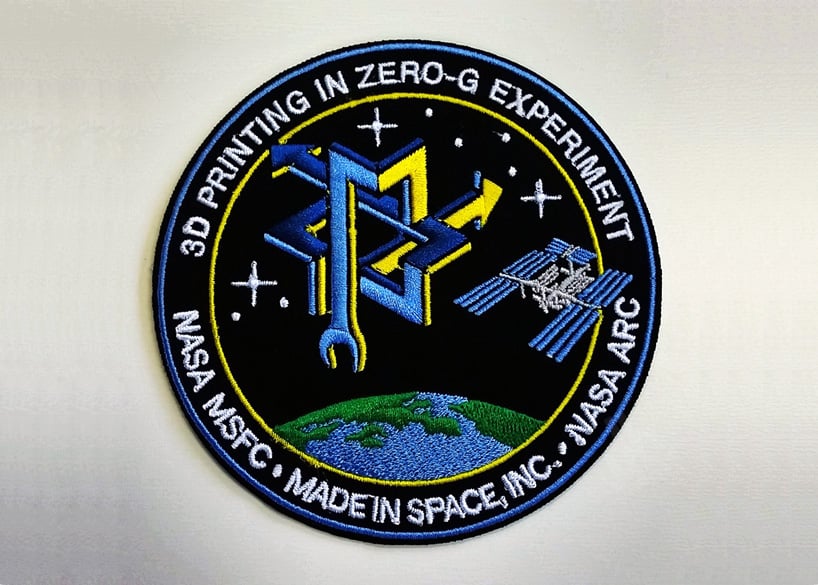
ISS commander Barry “Butch” Wilmore holds up the first 3-D printed part made in space. Photo: Made in Space.
The latest art/technology breakthrough is literally out of this world: NASA has used a 3-D printer in outer space for the first time, successfully printing a 3-D object thanks to a specially designed machine from Made In Space, Inc. As reported by the creators project, the machine was ferried to the International Space Station during a resupply mission in September.
This historic first was quite utilitarian: the printer fashioned a functional addition to its own machinery, a faceplate featuring the NASA and Made In Space logos that will hold the wiring in place on its extruder printhead. Made In Space has been working with NASA’s Marshall Space Flight Center and Ames Research Center to develop fabrication technology that works in a low-gravity environment—artnet News can’t even begin to fathom how they solved that riddle.
NASA’s patch for its 3-D printing in space program. Photo: NASA.
A functioning 3-D printer onboard the ISS means that astronauts will be able to produce their own spare parts and objects using designs sent digitally from earth. “For the first time, it’s no longer true that rockets are the only way to send hardware to space,” Made In Space chief strategy officer Mike Chen said in a statement.
“Manufacturing components on demand will yield more efficient, more reliable and less Earth dependent space programs in the near future,” added director of research and development Mike Snyder. For the foreseeable future, artistic applications for the machine, while undoubtedly possible, will likely take a backseat to more practical concerns.
The first 3-D printed part made in space. Photo: Made in Space.
Now that the printer is up and running, the next step is to compare objects printed in space to identical ones produced on the ground, to see how well the machine is operating in microgravity.
Other 3-D printing firsts achieved in 2014 include the first concert played on 3-D printed instruments, and President Obama becoming the first sitting US president to be immortalized with a 3-D printed bust (see “Swedes Stage First Ever Concert on 3-D-Printed Instruments” and “Obama Is First 3-D Scanned and Printed President“).